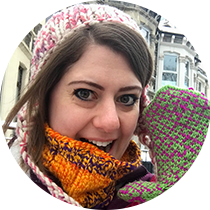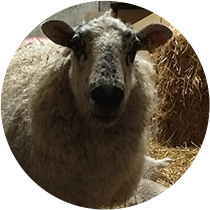The Ouessant Sheep was my latest featured breed of sheep on the Plutonium Muffins podcast, in Episode Seven: Kiti. Listen to the episode here! Then sit back and enjoy this little bit of extra information.
I queued this post on the Ouessant sheep for you to come out on Monday, but it didn’t work. Here it is now!
The Ouessant
The Ile de Ouessant, or Ushant Island, is a small body of land in the English Channel, located around 12 miles off the coast of Brittany. Purportedly, when this island was conquered by the Vikings, the descendants of the sheep were left behind. These were of the Northern European Short Tail family.
Pronunciation has been cited as “Ooh-sawn” (source) or “Weh-sahn” (Fleece and Fiber Sourcebook) – if anyone has any thoughts on this, do let me know.
The sheep were endemic to the island until the start of the 20th Century. They nearly died out in the mid 1900’s, but some wealthy landowners allowed them to graze on their land, and their numbers increased. They are now found in a number of European countries including Germany and Great Britain, and are found in Massachusetts and Florida in the States (this is information from Wikipedia and if it is out of date I would love to know).
The sheep are some of the smallest sheep in the world which stand at around 49 cm on the shoulder if they are rams, and 45 cm for the ewes. Because of this, they may be colloquially known as the Breton Dwarf.
Conditions on the island were very particular and as a result the breeding of the sheep was highly selective. Grazing on the island was poor in nutritional value, so they would not grow large. However, as a fleece and meat animal, higher yields of wool and edible parts were favoured, so the modern sheep tend to grow well and produce thick, big fleeces.
Additionally, the cultural practice for married women in rural areas was that they would wear all-black clothes. As a result, black animals were preferably bred and the majority of the animals are now black or brown, with the occasional white or lighter sheep. Photos exist of the women of the island taking their sheep to their grazing sites on leads, where they were tethered and left to graze. These are cited in the Fleece and Fiber Sourcebook – I am unable to find any online after a relatively extensive search, so I’ll keep searching and update you.
The fleece is double- or triple-coated, and has retained the ability to be shed in the spring if the sheep is not shorn. The disadvantage of this trait is that the locks can tend to get matted on the ends, which can make it much harder to spin the fibre. Some people will cut the base of the lock, which will reduce the length of the lock but improves the workability of the wool. The fibre of the overcoat is said to be scratchy and not suitable for projects where the item touches the skin unless the undercoat is fully removed and spun up individually from these fibres.
The main place I have found that offers fleeces for sale online is eBay; however this is typically for full fleeces, and as I am looking for a sample, it’s no good to me! The search continues…
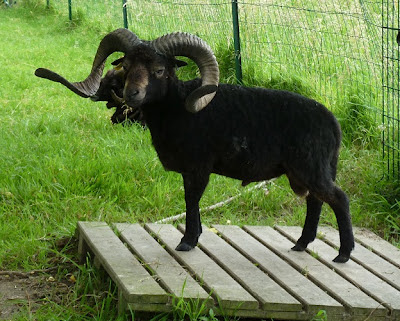
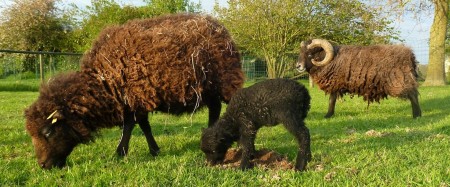
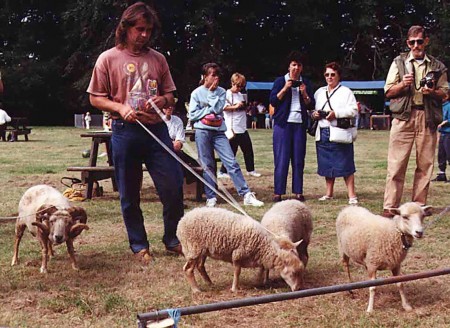
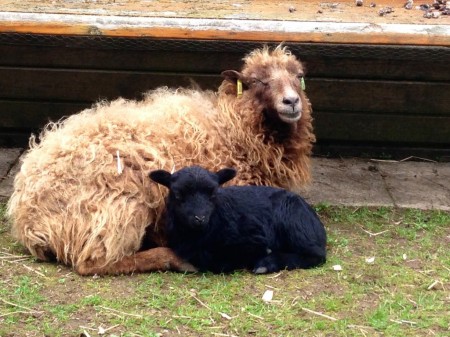
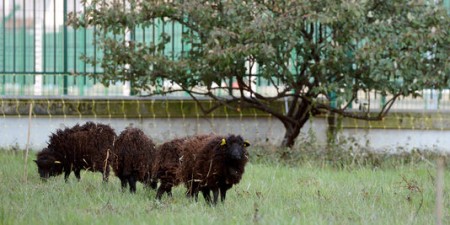
That’s it for this little breed. It was suggested by @perclexed on Twitter in the dedicated thread on the Plutonium Muffins group on Ravelry – thank you so much to her for the recommendation. If you have any further suggestions for sheep you would like to learn a little more about, please do let me know!
Much love,
Corrie xx
Sources
Wikipedia – Ouessant Sheep
Wikipedia – Ushant
I have used Amazon Affiliate links on the book recommendation in this post. There is no obligation if you click on it – but I will get a small commission if you do buy the book, which will go towards the running costs of Plutonium Muffins.

